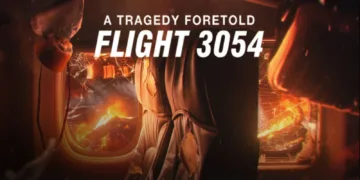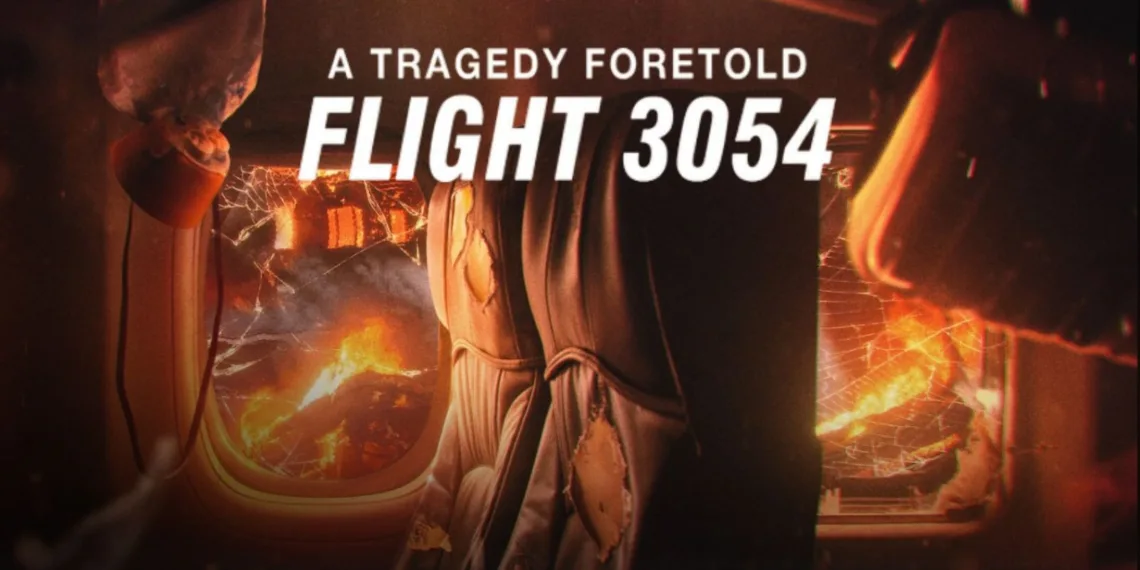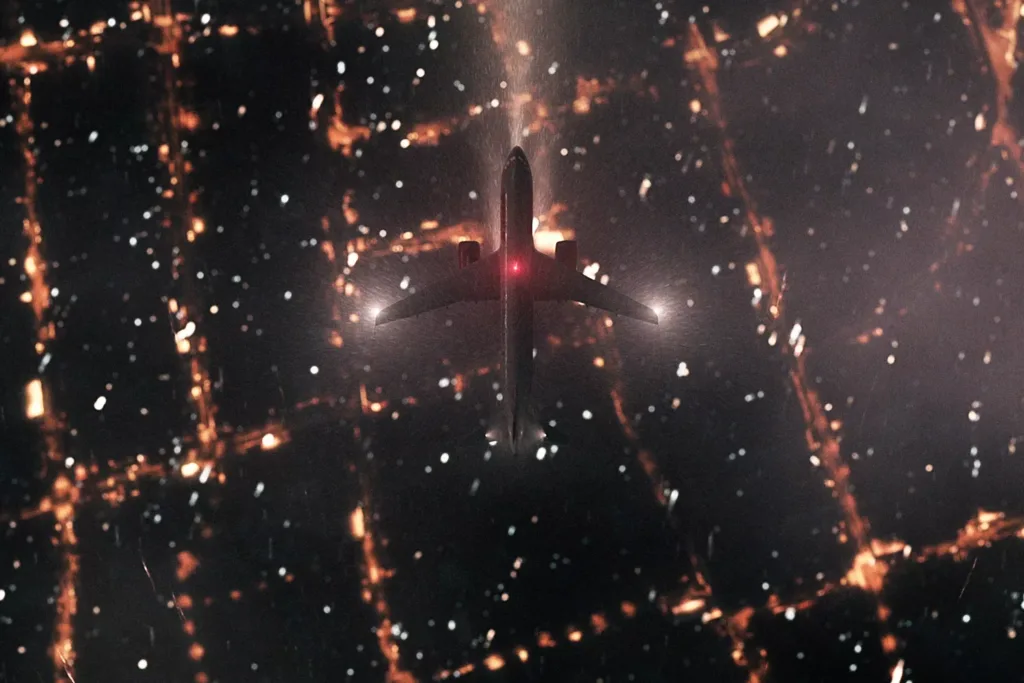Some disasters announce themselves with the subtlety of a freight train—and then there are those that whisper their arrival through a thousand small compromises until the inevitable becomes unavoidable. Angelo Defanti’s three-part Netflix docuseries “A Tragedy Foretold: Flight 3054” belongs firmly in the latter category, examining Latin America’s deadliest aviation disaster with the forensic precision of a coroner and the moral clarity of a prosecutor’s closing argument.
The bare facts read like a nightmare: July 17, 2007, São Paulo’s Congonhas Airport, a rain-soaked evening that claimed 199 lives when TAM Airlines Flight 3054 skidded off the runway and slammed into a TAM Express warehouse. All 187 passengers and crew perished, along with 12 people on the ground. But Defanti isn’t interested in reciting statistics—he’s excavating the anatomy of institutional failure.
This isn’t your typical disaster documentary that lingers on the “what” while tiptoeing around the “why.” Instead, it’s a methodical dissection of Brazil’s mid-2000s aviation crisis, where profit margins mattered more than safety margins. The series weaves together survivor testimonies, family interviews, expert analysis, and CGI reconstructions to build a case that feels less like mourning and more like an indictment. Eighteen years later, the families still seek justice, and this documentary serves as both their amplifier and their evidence.
The Art of Structured Revelation
The genius of “A Tragedy Foretold” lies in its narrative architecture—it opens with the crash itself, then works backward and forward like a detective story written in reverse. Episode one doesn’t waste time with exposition; it throws you into the chaos of that July night before methodically unpacking how São Paulo’s busiest airport became a death trap waiting to spring.
The progression feels almost mathematical in its precision: the crash and its immediate aftermath dominate the first episode, featuring Paulo Zani’s harrowing account of escaping the warehouse inferno. Episode two pivots to the investigation and the families’ Sisyphean quest for answers, while the final installment examines the legal proceedings—including a fascinating interview with Denise Abreu, the former ANAC director who became public enemy number one.
What sets this apart from typical true-crime documentaries is how it balances emotional testimony with technical analysis. The families’ grief never feels exploited, yet their pain drives the investigative momentum. Aviation experts explain thrust reversers and runway grooves without drowning viewers in jargon, while archival footage and court testimony build the case for systematic negligence piece by damning piece.
The title telegraphs the series’ central thesis: this wasn’t an accident but an inevitability. From the opening moments, Defanti positions this as a preventable tragedy where every warning sign was ignored, every safety protocol compromised, and every institutional safeguard rendered meaningless by the almighty pursuit of efficiency over human life.
Visual Storytelling in the Digital Age
Defanti’s production team walks a tightrope between respectful documentation and visceral impact—and mostly sticks the landing. The CGI reconstructions of the crash sequence serve their purpose without feeling exploitative, helping viewers understand the technical sequence of events that led to catastrophe. Sure, they occasionally look like expensive video game cutscenes, but they clarify complex aviation mechanics better than any talking head could.
The real visual storytelling triumph comes through cinematography that makes Congonhas Airport feel like a character in its own right. Those sweeping aerial shots of the facility, hemmed in by São Paulo’s urban sprawl, communicate the airport’s inherent dangers without a single word of explanation. You can practically feel the claustrophobia of planes threading the needle between skyscrapers.
The editing demonstrates remarkable restraint, particularly in a sequence where flight attendants collect boarding passes—the camera lingers on the small ritual of tearing ticket stubs before cutting to photographs of the victims. It’s a moment that could have been maudlin in lesser hands but instead feels like a quiet memorial service.
Archival material—security camera footage, news coverage, press conferences—provides authenticity without feeling dated. These elements ground the series in its historical moment while highlighting how quickly public attention moved on from the tragedy. The pacing across three episodes maintains engagement without rushing through complex technical and legal information, though occasionally the series feels like it’s stretching material that might have worked better as a feature-length film.
The Persistence of Institutional Memory
The series succeeds brilliantly as both memorial and warning, though it’s the warning that resonates most powerfully. “A Tragedy Foretold” builds an airtight case that this disaster was preventable—from the ungrooved runway to the overworked air traffic controllers to the systemic corners cut in Brazil’s aviation boom. Yet the series’ greatest achievement might be its unflinching examination of how accountability evaporates when responsibility gets diffused across multiple institutions.
The documentary’s treatment of the legal aftermath feels particularly sharp. Despite clear evidence of negligence spanning airlines, airports, and government agencies, meaningful justice remained elusive. The series doesn’t shy away from naming names or following money trails, but it also acknowledges the maddening reality that complex disasters rarely produce simple villains or satisfying resolutions.
Beyond the specific tragedy, the series illuminates broader questions about corporate responsibility and regulatory capture that feel disturbingly contemporary. The families’ stories are handled with appropriate sensitivity, yet their pain serves a larger investigative purpose—these aren’t just victims but witnesses to systemic failure.
The weathered memorial site that appears in the final episode serves as a perfect metaphor for society’s relationship with tragedy. Like the memorial itself, public memory fades and neglect sets in, leaving families to fight not just for justice but for remembrance.
Does the series succeed in ensuring this disaster won’t be forgotten? Perhaps that’s the wrong question. The real test might be whether it prevents the next one.
A Tragedy Foretold: Flight 3054 is a three-part docuseries about the TAM Airlines Flight 3054 crash in 2007. It was released on Netflix on April 23, 2025, and examines the events surrounding the crash and its impact on the victims’ families, according to Decider.
Full Credits
Director: Angelo Defanti, Fábio Leal
Writers: Angelo Defanti, Eduardo Aquino, Fábio Leal
Producers and Executive Producers: Beto Gauss, Francesco Civita, Bárbara Defanti, Renata Grynszpan
Cast: Christophe Haddad, Roberto Gomes, Dario Scott, Gustavo Rocha, Antonio Nogueira, Denise Abreu, Ildercler Ponce De Leão, José Eduardo Brosco, Consuelo Dieguez, Carmen Caballero, Eduardo Sato, Nelson Bruni, Clara Ant, Sandra Assali, Wagner Bertolini, Henguel Pereira, Cláudia Musa Fay, Ugo Frugoli, Josef Barat, Mário Luiz Sarrubbo, Raul Marinho, Paulo Zani, Roberto Hobeika, Marco Antonio Bologna, Rodrigo De Grandis, Simone Felizardo
Editors: Eduardo Aquino, Livia Arbex
The Review
A Tragedy Foretold: Flight 3054
"A Tragedy Foretold: Flight 3054" delivers a masterful blend of investigative journalism and human drama, transforming a complex aviation disaster into a damning indictment of institutional negligence. While the CGI reconstructions occasionally feel clunky and the three-episode structure slightly padded, the series excels at balancing technical analysis with emotional resonance. It's both a fitting memorial to 199 lives lost and a urgent warning about the human cost of prioritizing profit over safety.
PROS
- Excellent narrative structure that avoids typical documentary pacing pitfalls
- Respectful handling of victim testimonies without exploitation
- Clear explanation of complex aviation technical details
- Powerful visual storytelling through cinematography
- Strong investigative framework exposing systemic failures
CONS
- CGI reconstructions feel dated and occasionally distracting
- Could have been more impactful as a feature-length film
- Some archival footage quality issues
- Limited international context for Brazil's aviation crisis
















































